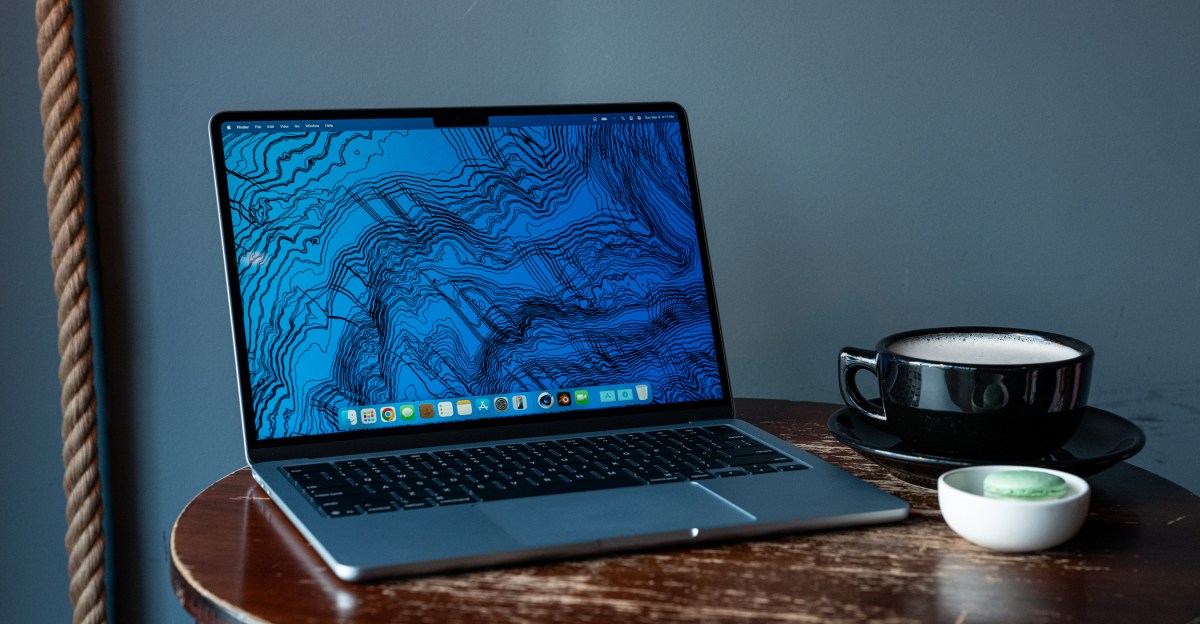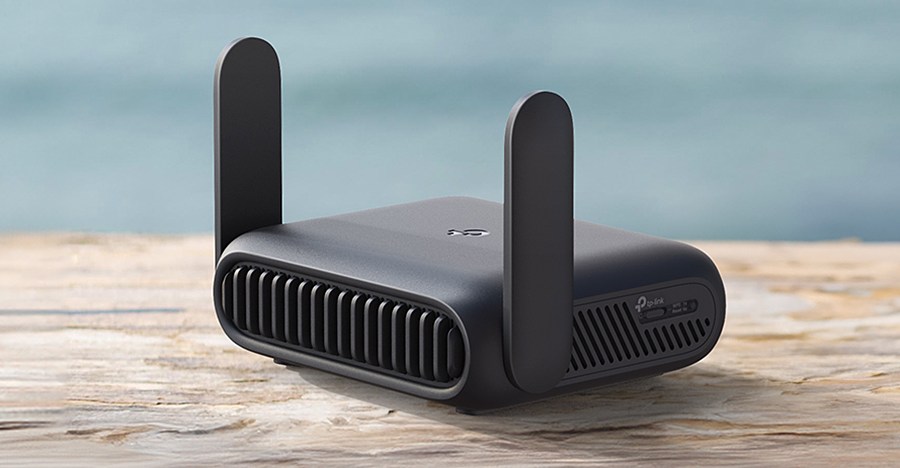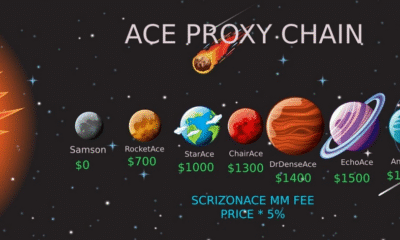On Thursday night, I toggled endlessly between a TikTok Live stream and a shopping app in anticipation of 9:30PM. For 30 minutes, I hunted for an available listing; many expletives were uttered. I exhibited bot behavior and got iced out of the app multiple times. I tapped so many times my thumbs got sore. This is Labubu drop night.
Artificial Intelligence
The frenzied, gamified chase for Labubus

Something that’s lost in the Labubu mania is that actually buying one from the source is, in one word, maddening. There are, of course, countless fake options (“Lafufus”) that some collectors have come to embrace. But if you want a guaranteed real one, you have to go to the source. Pop Mart, the Chinese toy company that sells Labubu products, has created a series of Sisyphean tasks to subject shoppers to, a humiliation ritual with the chance of getting a little figurine at the end. Unlike many other rare, trendy, or collectible items, the barrier to entry for Labubus is not the cost of the item ($27.99) — it’s everything you need to learn how to do before you buy them.
I spent about a day researching how to actually purchase a legit Labubu from Pop Mart. It’s not a straightforward shopping experience of simply clicking “check out” faster than everyone else. Pop Mart has created a digital frenzy that somewhat resembles what shopping in-person on Black Friday is like: interactive illustrations show display cases stocked with up to six boxes of Labubus. Seconds after they hit the site, all of the boxes are grayed out, meaning someone has at least temporarily claimed them. If you haven’t secured a Labubu, you must scroll through a seemingly endless list of display cases, looking for the rare box up for grabs; more often, though, you must tap constantly, looking for a gray box with a timer that is about to expire, at which point it will be released and available again. You have to play what is essentially a mobile game to even get a chance to buy a Labubu.
The complexity and finickiness of the Pop Mart app mean that there is no shortage of content with tips, hints, and hacks for securing a Labubu. Some influencers have racked up millions of views almost exclusively making videos about how to score popular Pop Mart products. Some of the tips I studied ended up helping me: when I tapped too many times and was blocked by the app, turning Wi-Fi on and off did indeed fix the problem. But other suggestions from collectors were impossible to follow. Some fans swear by camping out on Pop Mart’s hourslong TikTok live streams, waiting for the host to randomly list Labubus for sale on the platform’s shopping page; the auctioneer-style monologues were simply too much for me to listen to.
After about 30 minutes of uninterrupted two-handed tapping, close encounters, and error messages, I finally spammed a gray box right at the moment it was released. The mystery Labubu was mine. I “shook” the virtual box, which gave me a hint as to what color character was inside: it was not orange or green (I didn’t have a color preference, but other shoppers might at this point abandon a box that Pop Mart says does not contain their color of choice). After checkout, I opted to reveal which Labubu I had purchased — it was the blue one, named “Hope.”
It’s not entirely surprising that Labubus have taken off like this: the more you are forced to look at them, the cuter they become (maybe). They’re not the first so-called blind box toy to gain a cult following, and there’s a somewhat dark comparison to be made between Labubus and gambling — for serious collectors, the thrill is in the reveal, the chance that you hit the rare color that Pop Mart says is in one out of 72 boxes. It’s addictive, plain and simple.
But the longer I spent on Labubu forums or on the Pop Mart site, the more I understood that the toy at the end is almost beside the point: legit Labubus represent the time and effort that came before the unboxing, along with the pure luck of what’s inside. A friend who has scored dozens of Labubus for their network told me flipping the dolls isn’t even worth it unless it’s an unopened box or a rare color — the margins are too low to make real money. The pervasiveness of Lafufus no doubt helps to push prices down. The real value of Labubus is in the ridiculous hoops you have to jump through to get a shot at something collectible.
According to Google Trends, search volume for “Labubu” is as high as it’s been. The TikTok livestreams will drone on, the bots will be deployed nightly, and the viral unboxings will pull in views. The hype will die down only when it’s no longer torture to buy one, when the little guys (who are actually canonically girls) are just a toy, not a stand-in for your effort. When that will happen is anyone’s guess; my Labubu is scheduled to ship out in September.
Artificial Intelligence
The best laptop deals you can get right now

If you want a great laptop, you’re going to have to fork over a ton of money, right? Not necessarily. There are dozens of good laptops on the market at various price points. However, it can feel overwhelming to find the right one for your needs (some are better suited for, say, college students, whereas others are ideal for gamers).
That’s why we’ve come up with this list of some of the best laptop deals available right now. In addition to the latest discounts, we’ll share each discounted model’s best features (and downsides) to give you more clarity during your shopping journey. And if you need to do more research, you can also check out our guides to the best laptops on the market and the top gaming laptops.
Apple itself no longer sells the 13-inch MacBook Air with M1 — and hasn’t for years — but you can still get this solid laptop for $599.99 ($50 off) at Walmart. The 2020 model is available in one configuration, with 8GB of RAM and 256GB of storage, but it’s still capable at handling basic tasks like a champ, including streaming video, browsing, and dealing with documents. You can also use the M1 MacBook Air for creative work in Photoshop, Final Cut Pro, Logic, and Pixelmator, though you may experience slowdown due to its low 8GB of memory.
The laptop’s battery lasted between eight and ten hours when we originally reviewed it, and those figures should be mostly accurate, barring some differences likely caused by operating system updates. In addition to offering great performance for its price, the laptop also comes with other nice-to-have features, including a comfortable keyboard and an excellent trackpad. Just note its 720p webcam isn’t particularly good, so if a high-resolution webcam matters a lot to you, you may want to buy one separately. Also, be aware that, due to the limitations of the M1 chip, you can only use one external display at a time and port selection is also more limited than newer models.
Apple’s 13-inch MacBook Air with the M2 chip is a significant leap above the M1 model it succeeded, both in terms of design and performance. The old wedge-shaped look was replaced for a more squared-off design that’s still used by the current-generation MacBook Air. It has a 1080p webcam, which was a welcome improvement given the disappointing camera on the 2020 M1 model. It’s also much lighter and thus more portable as well, yet it retains features like MagSafe charging and Touch ID, as well as a nice display.
Despite its age, the M2 processor inside of this machine is still powerful enough to handle many tasks, from common ones such as browsing to more complex and creative projects. Compared to newer, pricier models, this one unsurprisingly struggles with gaming. That being said, it’s capable of running Cyberpunk 2077. The entry-level 13-inch MacBook Air with M2 launched with 8GB of RAM, but that configuration became unavailable last year when Apple made 16GB the new standard.
While a well-rounded laptop overall, there is one key area where Apple’s M1 model is better: storage. The base M2 MacBook Air with 256GB of storage is actually slower than its predecessor because it’s stored in a single NAND chip. This was corrected in subsequent MacBook Air models, so the slowdown is unique to M2 machines with 256GB of storage. Also, be aware as well that port selection isn’t great, and the included display notch — which is also found on both the 14- and 16-inch MacBook Pros — can make using the menu bar more challenging until you get used to it. If that doesn’t bother you, however, you can get a configuration with 16GB of RAM, 256GB of storage, an 8-core CPU and GPU for $699 ($100 off) at Best Buy.
The 13-inch MacBook Air with M4 is Apple’s latest thin and lightweight laptop, and it’s our top pick in The Verge’s guide to the best laptops right now. It’s not a MacBook Pro, but Apple’s M4 processor in the Air is still mighty capable. In our tests, it only throttled under heavy load from creative applications, which is understandable given its fanless design. The machine comes with 16GB of RAM as standard rather than an optional upgrade, but the base configuration still comes with just 256GB of storage, so be mindful of that limitation if you work with a lot of larger files.
Apple hasn’t increased the number of ports on a MacBook Air since reintroducing MagSafe to the M2 model in 2022, but this generation has Thunderbolt 4 ports rather than Thunderbolt 3 for faster file transfer speeds. Another notable addition is the 1080p Center Stage camera from the MacBook Pro, so you’ll stay in frame if you move around on a video call. Battery life should last all day, though your experience will vary depending on how hard you push this machine.
You can currently get a configuration of the 13-inch with M4 with 16GB of RAM and 256GB of storage, and a 10-core CPU and GPU for $799 ($200 off) at Amazon and Best Buy. If you need a larger screen, you can get the 15-inch MacBook Air with the same specs for $999 ($200 off) at Amazon and Best Buy.
M4 and M4 Pro MacBook Pro
The M4 generation MacBook Pros are Apple’s fastest laptops yet. The 14-inch MacBook Pro with M4 starts with 16GB of RAM and a 512GB SSD, and comes equipped with three Thunderbolt 4 ports, an HDMI port, an SD card slot, and a MagSafe charging port. It can send video to two external displays simultaneously (the previous generation could only handle one) and has an improved 12-megapixel Center Stage camera with better video quality.
The M4 MacBook Pro and M4 MacBook Air run on the same chip, but the Pro’s cooling system is better, so it handles resource-intensive tasks (including games) without throttling as easily. The laptop’s 14.2-inch screen is bright (up to 1,600 nits when viewing HDR content), and supports the P3 color gamut, both of which are important to professionals who rely on color accuracy when editing photos and video. The display has a 120Hz refresh rate, so scrolling through webpages or moving windows around should appear smoother than 60Hz screens. In our stress test, which included editing 33-megapixel RAW images and working with a large photo library in Adobe Lightroom, the laptop ran for 12 hours without kicking up the fans or feeling hot to the touch.
If you want even more power, you can jump up to the 14-inch MacBook Pro with an M4 Pro processor. It comes with 24GB of RAM, a 512GB SSD, a 12-core CPU, and a 16-core GPU. The M4 Pro MacBook Pro has over twice the memory bandwidth of the base M4 MacBook Pro, so it should perform better across the board. That said, it might be tough to notice the benefits of its extra memory and processing power during casual use, but it will come in handy when you’re pushing the laptop to the limits while video editing or playing games. It has three Thunderbolt 5 ports, and you can use that extra bandwidth with an external SSD with fast transfer speeds, to name an example. You can also get the MacBook Pro with M4 Pro with a 16-inch screen if you’d like to work on a larger display.
Right now, the 14-inch M4 model with 16GB of RAM, a 512GB SSD and 10-core CPU and 10-core GPU is $1,299 ($300 off) at Best Buy and $200 off at B&H Photo. You can get a 14-inch M4 Pro model with 24GB of RAM, a 512GB SSD, 12-core CPU, and 16-core GPU for around $1,786 at Amazon, Best Buy, and B&H Photo. The 16-inch M4 Pro MacBook Pro with 24GB of RAM, a 512GB SSD, 14-core CPU, and 20-core GPU is currently on sale for around $2,234 at Amazon and B&H Photo.
Microsoft Surface Laptop 7th Edition
We chose Microsoft’s 7th Edition Surface Laptop as one of the best laptops you can get because it’s the top Snapdragon Copilot Plus PC we’ve tried yet. The laptop runs on a power-efficient ARM processor that doesn’t skimp on performance. Its 13.8-inch 2,304 x 1,536 120Hz screen supports Dolby Vision HDR (High Dynamic Range) and looks very nice. It has a large, precision haptic trackpad that gives you plenty of room to tap and swipe, an offers satisfying feedback no matter where you press it.
The laptop has a pair of USB 4 ports, one USB-A 3.1 Gen 1 port, plus a headphone jack. One of the concerns of using an ARM-based Windows PC has been software compatibility, but this model proves that’s no longer something to be as worried about. It runs Photoshop, and apps compiled for X86 processors work thanks to Microsoft’s Prism emulator. Be sure to check the compatibility of the specific Windows app you rely, though, as there’s still a chance they won’t work as intended.
Even after our toughest tests, the battery lasted seven hours. That’s with 100 percent screen brightness, after downloading multiple Steam games, attending video calls, and running through multiple projects in Photoshop. Using the laptop with less power-hungry apps, including Slack, WhatsApp, Discord, and Chrome, the laptop used just 30 percent of its battery in seven hours. For the best battery life, you’ll want to stick to using native ARM apps when possible. If you want to make the switch to an ARM-based laptop to get some of the benefits MacBook users have had for years, the 7th Generation Surface Laptop is worth checking out.
You can get a 13.8-inch Microsoft Surface Laptop (7th Edition) with a Snapdragon X Plus processor, 16GB of RAM and 512GB SSD for $999 ($100 off) at Amazon. A model with the Snapdragon X Elite processor, 16GB of RAM, and a 512GB SSD is on sale for $1,099.99 ($300 off) at Best Buy.
Acer Chromebook Plus Spin 714
Verge reviewer Antonio G. Di Benedetto chose Acer’s Chromebook Plus Spin 714 as one of the best laptops for students because it offers an excellent balance of power, battery life, specs, and value. It’s also made the cut in our guide to the best Chromebooks because it supports Google’s Gemini smart assistant, and comes with a one-year subscription to Google’s One AI premium service. The current-generation laptop is a solid choice a year after it was released thanks in part to its Intel Core Ultra 5 Series 1 processor, which allows you to run Linux apps instead of being limited to software solely available through Google’s Play Store.
On to the specs: The laptop has a 14-inch 1920 x 1200 resolution touchscreen display, which can be flipped 180 degrees, so you can use the laptop as a large tablet if you prefer. The Plus Spin 714 has two Thunderbolt 4 ports and an HDMI port, which is an acceptable array of ports for a Chromebook. However, it only has 8GB of RAM, which will likely be a performance bottleneck if you intend to keep dozens of tabs open.
If your needs are relatively light and you don’t mind working mostly in the cloud instead of with local files, this is a solid computer. You can grab the Chromebook Plus Spin 714 for $629 ($170 off) at Best Buy.
We chose Asus’ Zenbook S 16 as another one of our top recommendations for students, but it’s a solid laptop for anyone who wants a large-screened Windows laptop. In our tests, the 16-inch 120Hz 3K (2,880 x 1,800) OLED display emits vivid colors and excellent contrast. The laptop was more than capable of handling common tasks, including video chats using its 1080p webcam, music streaming, but its graphics and gaming performance is what really sets it apart from laptops in its size and price classes.
This machine runs Cyberpunk 2077 at around 77 frames per second with the resolution set to 1080p with AMD’s FSR 2.1 upscaling software turned on. The laptop isn’t designed for gaming, but it’s good to know it’s up to the task if you’re willing to turn down some graphical settings. The Zenbook S 16’s battery lasted 11 hours during our testing. However, the percentage indicator in the Windows taskbar would often fluctuate, making it difficult to pin down exactly how much juice was left.
You can get a configuration of the laptop with 32GB of RAM, 1TB of storage, and an AMD Ryzen AI 9 HX 370 processor for $1,299.99 ($500 off) from Asus if you sign up for a free Asus membership. We signed up for the membership, and it took about five minutes from start to finish.
Asus ROG Strix Scar 16 (2025, RTX 5080)
If you want to take a powerful gaming PC with you on the go, Asus’ ROG Strix Scar 16 is one of the best we recommend. It has a 16-inch 240Hz Mini LED display with a resolution of 2,560 x 1,600. The screen can’t quite match an OLED when it comes to rich contrast, but you get Dolby Vision HDR here, and its color accuracy impressed us in our tests. The laptop has larger keys instead of a number pad, which makes sense for a gaming-focused laptop. If you need a number pad, you can bring up a touch-sensitive one by clicking and holding the top part of the laptop’s large trackpad.
Under the hood, Asus fitted the ROG Strix Scar 16 with an Intel Core Ultra 9 275HX processor, 32GB of RAM, 2TB of storage, and an Nvidia GeForce RTX 5080 graphics card with 16GB of dedicated video memory. The laptop’s display supports Nvidia’s G-Sync technology, so you shouldn’t see screen tearing or other graphical anomalies when playing games. The laptop has three USB-A 3.2 Gen 2 ports, an HDMI 2.1 port, an ethernet port, and two Thunderbolt 5 ports. You can use either the HDMI 2.1 port or Thunderbolt 5 ports to carry a 4K 120Hz video signal to a compatible TV or gaming monitor.
In case aesthetics matter to you, the ROG Strix Scar 16 has RGB lighting on its underside as well as a dot-matrix LED array that can display animations on its lid. These features aren’t new, but each can add some flair to your setup. Right now, you can get the Asus ROG Strix Scar 16 in its base configuration for around $2999.99 ($300 off) at Amazon, Best Buy, and Walmart.
Update, August 5th: Updated pricing and availability, and added new deals on Apple’s MacBook Air with M4, the MacBook Pro with M4 Pro, the Asus Zenbook S 16, the Asus ROG Strix Scar 16, Microsoft’s 7th Generation Surface Laptop, and Acer’s Chromebook Plus Spin 714.
Artificial Intelligence
Google is rolling out a fix for Pixel back button issues

Google’s August Pixel update includes a fix for Android’s three-button navigation and gesture navigation systems becoming unresponsive.
The issues appear to have started popping up shortly after the official release of Android 16 in June. Ever since that update, the user said that navigation has been “a complete mess” and that they ran into issues with buttons being “completely unresponsive” or delays of “over 30 seconds” on their Pixel 8 Pro. Another user said they had to occasionally press the back button “a few times” on their Pixel 9 to get the phone to register it. The swipe gesture to navigate back also occasionally stopped working, as noticed by Android Police’s Artem Russakovskii.
Google’s patch notes only vaguely say that the issues would happen under “certain conditions.” In addition to general stability improvements, the update also fixes an issue where a scheduled dark theme wouldn’t work. It also includes a security fix for a high severity remote code execution vulnerability.
The update is rolling out now for Pixel 6 devices and newer.
Artificial Intelligence
TP-Link’s new travel router delivers Wi-Fi 7 speeds

Connecting to free airport or hotel Wi-Fi can often be a time-consuming and frustrating task that doesn’t seem worth the effort for a bag full of wireless devices. TP-Link has announced its first Wi-Fi 7 travel router, providing up to a total of 3.6 Gbps of bandwidth while also making it easier to get multiple devices online from anywhere.
The TP-Link Wi-Fi 7 BE3600 Travel Router (TL-WR3602BE) is available now for $139.99 but Amazon has it for $109.99 with a $30 discount that’s available until the end of August.
We all travel with multiple devices needing Wi-Fi connectivity, and when you add kids and family into the mix, connecting them all to hotel or airport Wi-Fi can be an arduous job. Having all those devices pre-connected to a single travel router streamlines the process since you’re then only connecting one device to public Wi-Fi. You can use TP-Link’s mobile Tether app or the router’s web interface to navigate those annoying captive portals and login pages just once.
Other reasons to use a travel router include an extra layer of privacy. The TL-WR3602BE includes support for the OpenVPN and WireGuard protocols, so you can connect to over 35 different VPN providers, including NordVPN and Surfshark, while using a public Wi-Fi network you don’t entirely trust. And while your smartphone can serve as a hotspot for a handful of devices, TP-Link’s new travel router can connect to up to 90 at once.
There’s no built-in battery, but the travel router needs just 5V and can be powered using an included AC adapter, an external power bank, or even a USB-C connection to a laptop. It includes a pair of external antennas you can raise to extend its range, a USB-A 3.0 port for sharing files from connected drives, a 2.5 Gbps WAN and 1 Gbps LAN port, and a customizable button that can be configured to turn the VPN on and off, or quickly activate other functions.
-

 Cyber Security3 weeks ago
Cyber Security3 weeks agoHackers Use GitHub Repositories to Host Amadey Malware and Data Stealers, Bypassing Filters
-

 Cyber Security3 weeks ago
Cyber Security3 weeks agoDOGE Denizen Marko Elez Leaked API Key for xAI – Krebs on Security
-

 Fintech3 weeks ago
Fintech3 weeks agoFed Governor Lisa Cook: AI Set to Reshape Labor Market | PYMNTS.com
-

 Artificial Intelligence3 weeks ago
Artificial Intelligence3 weeks agoSubaru’s new Uncharted EV looks like an undercover Toyota C-HR
-

 Fintech3 weeks ago
Fintech3 weeks agoAmerican Express Likes What It Sees in ‘Wait and See’ Economy | PYMNTS.com
-

 Fintech3 weeks ago
Fintech3 weeks agoRetailers Rely on Modern POS to Beat Uncertainty | PYMNTS.com
-

 Fintech2 weeks ago
Fintech2 weeks agoThis Week in AI: AI Startups Hit Fundraising Gold | PYMNTS.com
-

 Cyber Security3 weeks ago
Cyber Security3 weeks agoUK Arrests Four in ‘Scattered Spider’ Ransom Group – Krebs on Security



















